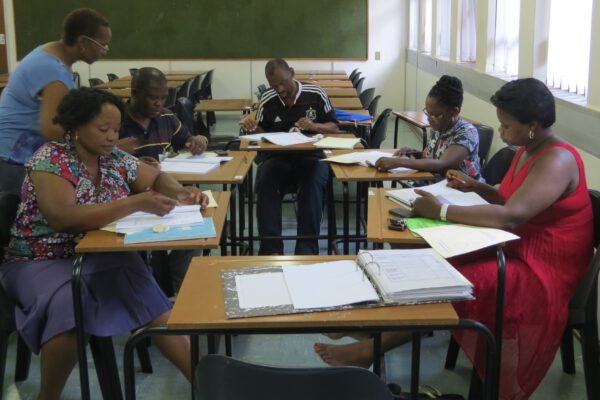By Robin M. Helms
Robin Matross Helms previews the upcoming ACE-Boston College International Brief for Higher Education Leaders, which looks at new possibilities for transatlantic collaboration.
The United States and Europe have a long history of academic collaboration and mutual influence in the higher education sphere.
Originally traveling by ocean liner, students have been traversing the Atlantic for long- and short-term study abroad for over a century. Faculty research collaborations have flourished in a wide range of disciplines, along with joint and dual-degree programs, joint teaching endeavors, institutional partnerships and an array of other activities.
In recent years, U.S. and European institutions alike have been expanding their circles of engagement. Our topic choices for previous installments in the ACE-Boston College International Briefs for Higher Education Leaders series have reflected a number of the countries and regions that have come to the fore and captured the energy and attention of globally-minded institutions: China, India and the “Southern Cone.” The collaborations and activities resulting from this focus have been—and continue to be—exciting and fruitful.
For our next installment of the brief and the accompanying April 13 webinar, however, we are returning to our old friendship with Europe. The last three decades have seen significant changes in European higher education, which have presented both opportunities and challenges for the U.S.-Europe relationship. In the brief, we explore the impact of the Bologna process and the formation of the European Higher Education Area (EHEA), recent trends in student mobility, research developments, the role of European higher education associations, broader European internationalization initiatives and global interactions, and what all of this means for U.S. institutions.
Of particular note, the brief and webinar address a number of European programs, such as Erasmus+ and Horizon 2020—names that are familiar to many in the United States, but the details of which are not always known to non-European audiences. Reflecting European higher education’s overall internationalization efforts and desire to connect more deeply beyond its borders, programs that were originally intended to spur intra-Europe collaboration are now being expanded to include opportunities for individuals and institutions beyond the region. In the webinar, we’ll discuss how U.S. institutions can tap into these initiatives to further their internationalization goals and activities.
We also get specific about particular countries. Europe is a big region, and how all of the changes of the last 30 years have played out varies significantly by country context. In the Brief, we take an in-depth look at five countries—Italy, Croatia, Germany, and Belgium—and how their relationships with the United States have evolved over time.
From start to finish, it takes about nine months to produce an installment of the brief. In the time since we decided to focus on Europe for this edition, there have been major terrorist attacks in Paris and Brussels, the refugee crisis has escalated significantly, and economic and political tensions within and beyond the region persist. All of these factors are impacting European higher education and its relationship with the world, including the United States.
This relationship has endured over time, and in the face of these global challenges, is perhaps more important than ever. For it to continue, however, a solid mutual understanding of current dynamics and priorities is crucial—we hope this installment of the brief will contribute to this understanding and help institutions on both sides of the Atlantic figure out how best to work together going forward.
If you have any questions or comments about this blog post, please contact us.


